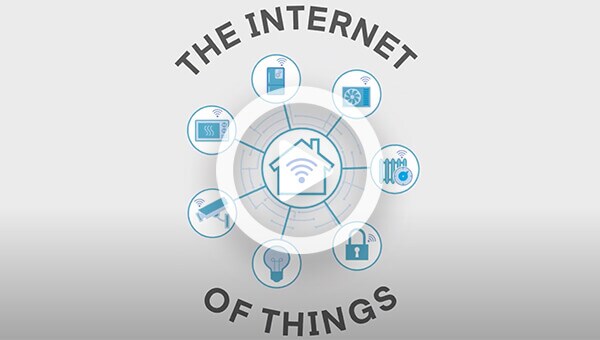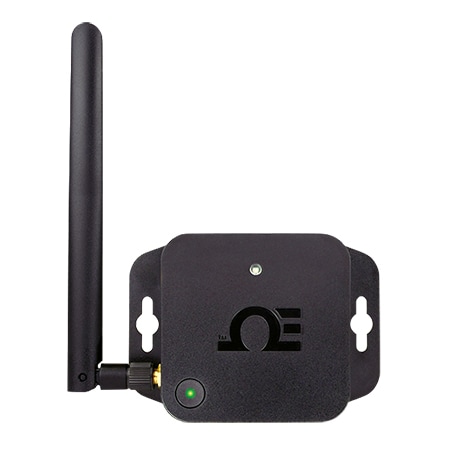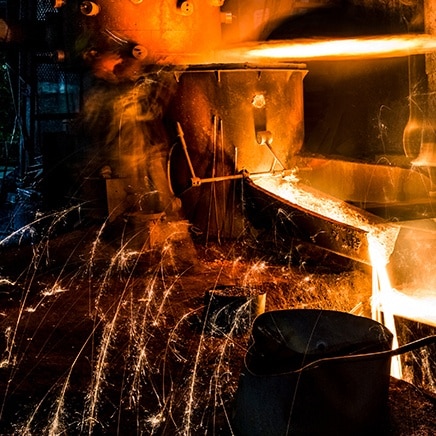An important recent technological trend, and one that has grown tremendously in the past decade specifically, is the increased presence of ‘smart’ devices in our everyday lives. From smart kitchens to smart home security systems, from smart medical devices to smart farm equipment, we live in a brave, new, ‘smart’ world – a world in which interconnected systems of web-enabled devices help people live and work with an efficiency almost inconceivable 25 years ago. This integration of ‘smart’ technology has come to be known as the Internet of Things, or IoT.
What is an IoT System Exactly?
An IoT ecosystem consists of various ‘things’ that collect, transmit, and act on environmental data they are exposed to. A ‘thing’ in an IoT system can be anything, really: a person with an implanted heart monitor, a refrigerator with sensors that can determine if certain items need to be replenished, a farm animal with a biochip transponder, or any other object that can be assigned an Internet Protocol (IP) address and can transfer data over a network. These various web-enabled transponders, sensors, monitors, and other types of communication hardware connect to a centralized IoT gateway where data is either immediately accessible from a smartphone or a computer or is sent to the cloud.
IIoT
Industry, like it always does, is adapting itself to this technological trend, and many industrial systems professionals are implementing and utilizing IoT principles – which, when applied in an industrial application, are known as the Industrial Internet of Things, or IIoT. IIoT has proven to be a major disruptive opportunity in industry and can massively improve connectivity, efficiency, scalability, time savings, and cost savings for industrial and manufacturing organizations. Companies benefit from IIoT through predictive maintenance, improved safety, and other operational benefits.
IoT vs IIoT
While IoT and IIoT are fundamentally and theoretically the same concept – in fact, it would be fair to say that IIoT is a subset of the larger, broader IoT – there are some major differences between the two. The first and foremost difference between IoT and IIoT is the end-user. IoT is for retail customers and devices like smart bulbs, voice assistants, and smart vacuums are prime examples. IIoT, on the other hand, is for industries where the emphasis is on collecting data measurement for an intelligent ecosystem between the machinery. Therefore, while function is often assumed to be the distinguishing factor between an IoT and IIoT system, the major difference actually exists in the necessary design parameters IIoT systems require. Because IIoT systems are meant to serve industrial applications specifically, more robust parameters are required.
3 Reasons Consumer Grade IoT Is Not Suitable for Industrial Application
1. Connectivity and Signal Strength
While consumer oriented IoT systems – like a home security system or a smart appliance – operate and function over basic home WiFi networks or over Bluetooth, IIoT systems require higher levels of connectivity and signal strength. Interference from heavy industrial machinery or vast signal traveling distances are commonplace logistical obstacles in industrial applications – and insufficient connectivity or a weak signal can result in costly downtime. IIoT systems require purpose-built industrial IoT ecosystems that account for these (and other) factors and are capable of providing reliable, sufficient connectivity and optimal signal strength.
2. Adaptive Integration with Industrial Protocols
Industrial systems generally operate under machine communications protocols such as RS485-RTU or Modbus. A robust IIoT system will be able to integrate seamlessly into existing and legacy platforms alike, as well as support PoE – or Power over Ethernet – applications. In addition, IIoT systems provide the flexibility and adaptability to be reprogrammed and reconfigured to support new processes as they arise. Consumer grade IoT systems are limited in the protocols they can support and lack the adaptive capabilities to keep up with the demands of industrial applications.
3. Data Extraction and Predictive Maintenance
Purpose built IIoT systems allow systems operators and managers to extract and aggregate sensor data using data management tools built into the system. This data allows for predictive maintenance programs that can alert operators to maintenance issues before they become problematic – avoiding expensive repairs, costly downtime, and lost or damaged products. Consumer grade IoT systems simply do not have these data management capabilities.



